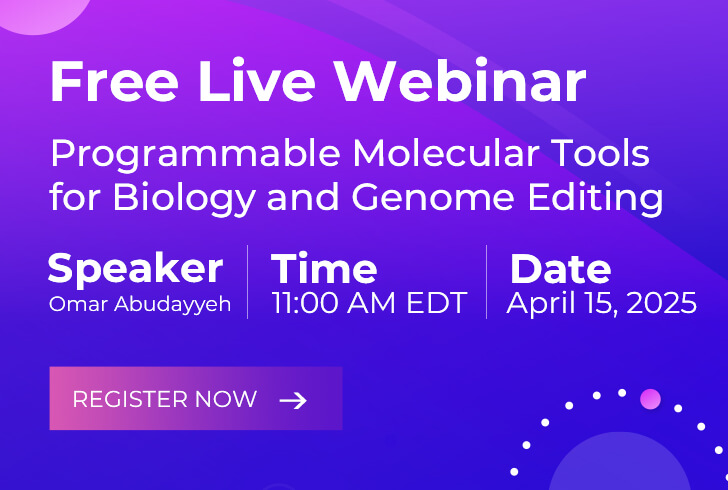Techniques for the Diagnosis of Genetic Disorders
Inquiry NowGenetic disorders are diseases caused by gene or chromosome abnormalities, including monogenic disorders, polygenic disorders, chromosomal disorders and mitochondrial disorders. The incidence of genetic disorders varies globally but is generally high, with an estimated 5% to 10% of the population suffering from some kind of genetic disorder. Genetic disorders not only have serious health and quality of life impacts on patients themselves but also impose heavy burdens on their families and society. Therefore, timely and accurate diagnosis of genetic disorders is essential for providing effective treatment, prevention and counseling. However, diagnosing genetic disorders is not easy and faces multiple challenges. First, the clinical manifestations of genetic disorders are often complex and diverse, making them difficult to distinguish and identify. Second, the occurrence of genetic disorders involves variations at the gene or chromosome level, requiring special detection techniques and equipment. Third, the diagnosis of genetic disorders involves sensitive personal and family information, requiring consideration of ethical, legal and social issues. To cope with these challenges, scientists have been developing and improving various techniques for the diagnosis of genetic disorders, making them faster, more sensitive, more accurate and more economical.
Molecular Approach
Molecular biology methods are methods that use PCR, DNA sequencing, gene chip, and other techniques to amplify, sequence, hybridize, and perform other reactions to DNA or RNA, thus detecting and analyzing gene mutations, chromosomal abnormalities, or gene expression related to genetic disorders. Molecular biology methods have the advantages of high sensitivity, high specificity, high accuracy and high throughput in the diagnosis of genetic disorders. They can be applied to the detection of various types and levels of genetic variations and can also discover new genetic variations or disease-related genes. Molecular biology methods play an important role and value in the diagnosis of genetic disorders, but they also need to be constantly improved and developed to solve the problems of sample quality, operation standards, data interpretation, ethics and law.
Cytogenetic Techniques
Cytogenetic methods are methods that use cell culture and chromosome preparation techniques to perform banding, analysis and counting of chromosomes, thus detecting and analyzing chromosome numbers or structural abnormalities related to genetic disorders. Cytogenetic methods have the advantages of low cost, simple operation and intuitive results in the diagnosis of genetic disorders. They can be applied to the detection of various types and levels of chromosome variations and can also discover complex or unknown chromosome abnormalities. Cytogenetic methods play an important role and value in the diagnosis of genetic disorders, but they also need to be combined with other methods or constantly innovated and developed to solve the problems of low resolution, high sample demand, time-consuming operation and difficult data interpretation.
Prenatal Genetic Diagnosis
Prenatal genetic diagnosis methods are methods that detect and analyze the genes or chromosomes of the fetus before birth, thus determining whether the fetus has a genetic disorder or congenital defect. Prenatal genetic diagnosis methods can help high-risk pregnant women know the health status of the fetus and make rational and wise decisions, as well as provide the best medical care and care for the fetus. Prenatal genetic diagnosis methods include non-invasive prenatal testing (NIPT), amniocentesis (AC), chorionic villus sampling (CVS), cordocentesis (CC) and others, which have their own advantages, disadvantages and risks and need to be performed and applied cautiously on the basis of informed consent and genetic counseling. Prenatal genetic diagnosis methods also involve ethical, legal, and social issues, which require balancing the rights and responsibilities of stakeholders.
Denaturing High-Performance Liquid Chromatography
Denaturing high-performance liquid chromatography (DHPLC) methods are methods that use high-performance liquid chromatography instruments to separate and detect DNA fragments by denaturing and renaturing DNA fragments, making them have different conformations and hydrophobicity, and analyzing their retention time and peak intensity on the chromatographic column, thus obtaining sequence variation information in DNA fragments. DHPLC methods can detect various types of sequence variations, such as SNPs, SSLPs, INDELs, etc., and can also be combined with other techniques for further analysis, such as DNA sequencing, gene chips, etc. DHPLC methods have the advantages of high sensitivity, high specificity, fast speed, low cost, simple operation and wide applicability. They can be applied to the detection of various genetic disorders related to sequence variations, but they also need to be constantly improved and developed to solve the problems of sample quality, primer design, temperature optimization, data interpretation, and so on.
References
- Al-Jader LN, et al. Molecular diagnosis of genetic diseases. Methods Mol Biol. 1998;92:1-18.
- Biesecker LG, et al. Cytogenetic diagnosis and counselling. Curr Opin Pediatr. 2000 Feb;12(1):25-31.
- Bianchi DW, et al. Prenatal diagnosis of fetal genetic disorders. N Engl J Med. 2020 Oct 29;383(18):1783-1794.
- O'Donovan MC, et al. High-throughput DNA sequencing for genetic diagnosis of neurological disorders. Lancet Neurol. 2013 Nov;12(11):1062-1070.
- Oetting WS, et al. Gene chips and arrays revealed: a primer on their power and their uses. Biol Cell. 2003 Jan;95(1):79-86.
- Underhill HR, et al. Denaturing high-performance liquid chromatography (DHPLC) for the detection of unknown mutations. Methods Mol Biol. 2010;653:95-114.
- Zhang J, et al. Advances in prenatal genetic screening and testing. Natl Med J China. 2017 Oct 10;97(38):2975-2981.

